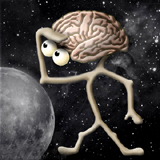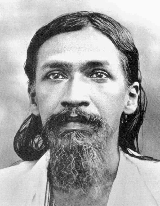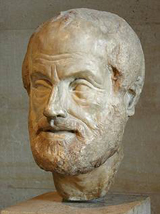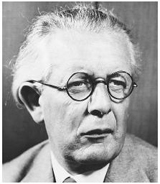Psychology
Embodied cognition in yoga psychology
Editor's note
The field of psychology is still evolving. As human consciousness becomes aware of deeper dimensions, there will be a natural urge to shift existing paradigms to accommodate the emerging experiences. These experiences are not entirely new, but have so far been either ignored or explained away by modern psychology. However, man cannot be led into believing that he is nothing more than a bundle of nerves and a basket of chemicals. It contradicts his intuitive understanding of himself. No wonder psychology today is trying to break fresh grounds. However, its one challenge is to integrate its findings with the already existing body of knowledge derived from neurosciences. In this article, the author strives to see how far and to what extent the shifts in the field of cognitive psychology agree and are aligned with the insights and intuitions provided by Sri Aurobindo and the Mother.
The Cartesian paradigm which dominated (plagued?) science for the past three centuries is gradually being jettisoned. In the cognitive sciences, one of the latest theories being actively researched is called ‘Embodied Cognition’ which posits that the mind is inextricably tied to the environment. It argues that higher cognitive processes of the mind are shaped by and grounded in the bodily experience. In the works of Sri Aurobindo and the Mother, Mirra Alfassa, we find unstinting affirmation for this model of cognition; in fact, their whole model of Integral Psychology is based on a fine-grained differentiation of the intricate connection between the mind, the vital and the physical parts of the human consciousness. In this article, we explore potential linkages between the Integral Psychology of Sri Aurobindo and the emerging field of embodied cognition.
History of cognitive science
Cognitive science came into being in the 1950s as a revolution against behavioral psychology. Behaviorism denied the existence of the internal states of the organism and sought to explain all behavior in terms of stimulus-response molded by behavioral conditioning. In contrast, cognitive science formulated the computational model of the mind, wherein the brain was essentially an abstract symbol-manipulating machine which took sensory inputs through the nervous system, abstracted them into a symbolic representation and then did information processing totally independent of the physical environment. Today, this is referred to as the classical model in cognitive science. In hindsight, this model introduced the ‘mind-mind problem’ because it separated the computational mind from the phenomenological mind and refused to recognize the role of the latter (1). Integral Yoga cognoscenti will recognize the mind-mind problem as the delineation of the thinking mind from the vital and physical mind.
The classical model was succeeded by the connectionist model in the 1980s. It advanced the notion of the mind as a neural network. This network was composed of layers of neurons which, when given appropriate input and training, would converge to exhibit a particular cognitive performance. The classical model postulated memory as retrieval from a symbolic database, problem-solving as deductive reasoning, cognition as centralized, the body as an input device and the environment as just a problem domain. On the other hand, the connectionist model characterized memory as pattern-creation, problem-solving as pattern recognition and transformation, and cognition as increasingly decentralized (2). Neither of these movements closed the explanatory gap in the linkage between the mind and matter, and between consciousness and nature. Both neglected the rich phenomenological accounts of the structure of human experience, and failed to include the pervasive influence of emotion and motivation on cognitive processes.
It is under these circumstances that the concept of embodied cognition gradually unfolded in cognitive sciences in the 1990s. The phrase ‘embodied mind’ seems to have been coined by John Haugeland in a paper ‘Mind embodied and embedded’, published around the same time(3). Embodiment also arose due to dissatisfaction with the inability of symbolic AI approaches to cope with the practical problems of modeling robots moving around in actual environments (4). There are also some who believe the concept of embodied mind is derived from Aristotle’s definition of the psyche.
It must be emphasized that embodied cognition as it stands today is not a clearly delineated theory but an expansive and fluid research program, encompassing the efforts of many cognitive scientists and philosophers who seek to incorporate the advances which have been achieved in neuroscience (e.g. the identification of distinct sensorimotor areas in the brain), linguistics (e.g. the use of body-based metaphors in linguistic reasoning), phenomenology (the work of Husserl and Merleau-Ponty), behavior-based robotics (e.g. difficulties in modeling interaction with the environment), ecological psychology (the work of J.J. Gibson who viewed perception in terms of affordances — potential interactions with the environment), developmental psychology of Jean Piaget (emergence of cognitive abilities out of sensorimotor abilities as observed in children), and ethology (e.g. proto-mathematical and reasoning skills which have been detected in animals). Just as the ‘Integral movement’ has become a catch-all term for a bewildering number of often puzzling endeavors, similarly under the auspices of embodied cognition, research is underway in all sorts of disparate areas — how is cognition influenced by the partial off-loading of computation onto PDAs (personal digital assistant), what is the effect of the pecul-iarities of the human visual system on cognition, etc. This article is not an attempt to survey and synthesize such a vast field. Surveys of that kind exist [see (5, 6, 7) for example]. In this article, the focus is restricted to exploring one prominent aspect of embodied cognition — its professed aspiration to incorporate emotion into the cognitive process and how it is connected to the Integral Psychology of Sri Aurobindo and the Mother.
Empirical evidence of embodied cognition
Under the embodied mind hypothesis, the cognitive process can be inadvertently influenced by the physical body as well as the environment — the temperature of the room, the texture of the objects one is in contact with, the hardness of the chair one is sitting on, and so on and so forth. The human psyche can tie physical cleanliness with moral purity, denoted as the Lady Macbeth effect (“Out, damn spot! Out I say!”). Recollection of past emotional states is also said to influence the mental judgments that are being currently made. There is growing experimental evidence to support the hypothesis of a tight mind-body-environment coupling, as the published research we now discuss demonstrates.
Through a series of six psychological experiments, Ackerman, Nocera and Bargh showed that the three tactile dimensions — texture, hardness, weight — can influence the higher social cognitive processing (8). In the first study, 54 participants were asked to evaluate a job candidate by reviewing resumees on either light or heavy clipboards. Participants with heavy clipboards rated the candidate better overall and specifically displaying more interest in the position. They even rated their own accuracy on the task as more important than those who were given light clipboards! In the second study, 43 participants were given light or heavy clipboards and asked to fill out social action surveys to determine funding for socially serious as well as some idiosyncratic issues. Men who used heavier clipboards tended to allocate more money to social issues, while women always allocated money to social issues irrespective of the clipboard, indicating thereby that touch imperceptibly prejudices the thought process but does not significantly alter the general personality. The third and fourth studies evaluated the response to texture while the fifth and sixth study investigated the effect of hardness. In the sixth study, 86 participants were asked to complete a ‘negotiation task’ (bid for a car again after being rejected the first time) and an ‘impression formation task’ (reading a passage describing an ambiguous interaction between a boss and an employee) in hard or soft chairs. Those seated in hard chairs tended to have less variance in the prices they offered for the car (the first task) and also tended to rate the employee (in the second task) to be more stable and less emotional. The authors speculate that sensorimotor experiences in early life form a scaffold for the development of conceptual knowledge (i.e. we interpret the world through the body shell). Particular dimensions of the haptic experience may be mapping onto metaphorical concepts formed in the brain. Our tactile evaluations are even reflected in the daily linguistic metaphors (we use terms like ‘hard-hearted’ or ‘coarse language’ or ‘gravity of the situation‘). Touch is the first sense to develop ontogenetically when we are children and thus probably becomes intertwined in the evaluations that we make later in life.Physical cleansing is at the core of all religious traditions, possibly because it provides us a way to evoke the lost purity of the soul. Chen-Bo Zhong from the University of Toronto and Katie Liljenquist from Northwestern University decided to evaluate the linkage between physical cleanliness and moral judgements (9). In the first study, they investigated whether threats to moral purity increase the mental accessibility to cleansing-related words. Participants were asked to recall in detail an ethical or unethical deed in their past and to describe any feelings or emotions they experienced. Then they engaged in a word completion task in which they converted word fragments into meaningful words. Of the six word fragments, three (W_ _H, SH_ _ER and S_ _P) could be completed as cleansing-related words (wash, shower and soap) or as unrelated words (e.g. wish, shaker, step). Those who had recalled an unethical deed preferred to fill out the cleansing-related words while those who had remembered ethical actions showed no such preference. The second study set out to determine whether implicit threat to moral purity produces a psychological desire for cleansing. Volunteers copied out a first-person passage describing some ethical or unethical deed and were then given a choice of using a cleansing product or some general grocery item. As expected, those copying the unethical deed expressed a marked preference for using the cleansing products. The third study was similar to the second except that one had to recall an ethical or unethical deed of one’s own instead of copying out someone else’s story. The fourth study investigated whether physical cleansing can actually create the illusion of washing away moral sins (à la Lady Macbeth). Participants were asked to recall a previous unethical deed, after which half of them cleansed their hands and the other half did nothing. Then they completed a survey soliciting their help for some charitable deed. Those who had cleansed their hands were less motivated to help out, presumably because the sanitation wipes had washed away their stains and restored their sense of morality. According to the authors, threats to moral purity seem to activate the need for physical cleansing, which when performed can assuage the emotional condition and reduce the desire to offer any further compensatory restitution.
Zhong, Bohns and Gino also tested whether darkness can induce an illusory feeling of anonymity and aggravate morally questionable behavior (10). In a set of three experiments, they found that a dark environment (without actual anonymity) can induce participants to cheat to earn un-deserved money, that people act selfishly in a dictator game while wearing sunglasses as opposed to clear glasses, and that the subjective perception of one’s anonymity could be induced by wearing sunglasses.
Zhong, Liljenquist and Galinsky have also tested the influence of the room atmosphere on the cognitive process (11). They showed that clean smells can make people behave more virtuously. They ushered 99 students into either a scented or unscented room. Each one was given a set of miscellaneous tasks, including a flyer requesting volunteers for a charity called Habitat for Humanity. Those in the citrus-scented rooms were more likely to be interested in volunteering, and almost four times more willing to donate money to the cause. This study provides indirect support for the broken windows theory in criminology which suggests that signs of petty crime, like the eponymous broken windows, can trigger yet more criminal behavior.
Depressed individuals seem to have dimin-ished sensory perception, according to a couple of studies (12). In the first study conducted to determine the effect of depression on vision, neuropsychiatrist Ludger Tebartz van Elst of the University of Freiburg hooked up depressed patients and control subjects to a pattern electroretinograph, a device that measures electrical signals in the retina. When viewing black-and-white checkerboard images, people with depression showed markedly reduced electrical responses. The effect may originate in the retina’s amacrine cells, which feed sensory input to the neurons in the eye. Amacrine cells rely on the neurotransmitter dopamine to function, and mood disorders have been linked to dopamine dysfunctions in the brain. Tebartz van Elst believes the visual response test could serve as an objective measure for establishing a diagnosis of depression: “the patients don’t have to say anything at all — they just keep their eyes open,” he says. In another study, otorhinolaryngologist Thomas Hummel of the University of Dresden Medical School explored odor perception in depressed patients. Compared with control subjects, he found, people suffering from depression were less able to detect weak smells; MRI scans revealed that they had smaller olfactory bulbs, the brain structures involved in odor perception.
Embodied cognition in integral psychology
How does all this play into the Integral Yoga of Sri Aurobindo and the Mother? There are a few parallel remarks by the Mother, Mirra Alfassa, which corroborate the experimental observations we saw above. In the first passage, she discusses the physiological influence on cognition:
“The sense organs are under the influence of the psychological state of the individual because something comes in between the eye’s perception and the brain’s reception. It is very subtle; the brain receives the eye’s perceptions through the nerves; there is no reasoning, it is so to say instantaneous, but there is a short passage between the eye’s perception and the cell which is to respond and evaluate it in the brain. And it is this evaluation of the brain which is under the influence of feelings. It is the small vibration between what the eye sees and what the brain estimates which often falsifies the response. And it is not a question of good faith, for even the most sincere persons do not know what is happening, even very calm people, without any violent emotion, who do not even feel an emotion, are influenced in this way without being aware of the intervention of this little falsifying vibration. At times moral notions also intermix and falsify the judgment but we must throw far away from us all moral notions; for morality and Truth are very far from each other (if I am shocking anybody by saying this, I am sorry, but it is like that). It is only when you have conquered all attraction and all repulsion that you can have a correct judgment. As long as there are things that attract you and things that repel you, it is not possible for you to have an absolutely sure functioning of the senses (13).”
In this passage, she discusses the environmental influence on cognition:
“One believes he has his own way of thinking. Not at all. It depends totally upon the people one speaks with or the books he has read or on the mood he is in. It depends also on whether you have a good or bad digestion, it depends on whether you are shut up in a room without proper ventilation or whether you are in the open air; it depends on whether you have a beautiful landscape before you; it depends on whether there is sunshine or rain! You are not aware of it, but you think all kinds of things, completely different according to a heap of things which have nothing to do with you (14)!”
The Integral Psychology of Sri Aurobindo explains the notion of ‘embodied cognition’ through a tripartite division of the human mind as follows:
1. The mind proper
This is further sub-divided into the three parts: the thinking mind concerned with ideas in their own right, the dynamic mind centered at the ājñā cakra between the eyebrows which is focused on the realization of the idea, and lastly the externalizing mind centered at the viśuddha cakra at the throat which is concerned with the outward expression of the idea.
2. The vital mind
This is the part of the mind which is under the influence of the vital (prāṇa or energy). Its function is not to think but to dream and imagine the future. It is adroit at finding self-justification for the ambitions and passions which arise from the heart. When the day is sunny or the room is bright, the vital mind exults but when atmosphere is dull and dreary, it sulks.
3. The physical mind
This is the part of the mind which is shackled to the physiological state of the body. The physical mind is fixed on physical objects and happenings, sees and understands these only and deals with them according to their own nature. It relies solely on the input of the senses and has difficulty responding and accepting any notion of a higher consciousness — imagination, intuition, etc. In its extreme mechanical aspect, it worries whether the door has been locked, whether the lights in the house were turned off, and whether the bills have been paid.
The tripartite division posited above is a direct reflection of man’s evolutionary origin. These are the animalistic atavisms which continue to live within the human consciousness and shape the thought process, as Sri Aurobindo elucidates in this passage:
“The course of evolution proceeding from the vegetable to the animal, from the animal to the man, starts in the latter from the sub-human; he has to take up into him the animal and even the mineral and vegetable: they constitute his physical nature, they dominate his vitality, they have their hold upon his mentality. His proneness to many kinds of inertia, his readiness to vegetate, his attachment to the soil and clinging to his roots, to safe anchorages of all kinds, and on the other hand his nomadic and predatory impulses, his blind servility to custom and the rule of the pack, his mob-movements and openness to subconscious suggestions from the group-soul, his subjection to the yoke of rage and fear, his need of punishment and reliance on punishment, his inability to think and act for himself, his incapacity for true freedom, his distrust of novelty, his slowness to seize intelligently and assimilate, his downward propensity and earthward gaze, his vital and physical subjection to his heredity, all these and more are his heritage from the subhuman origins of his life and body and physical mind (15).”
Conclusion
Much embodied cognition research is still exploring the workings of the surface mind and does not yet have any model of the subliminal consciousness. Perhaps it will take a new generation of cognitive scientists to embrace and integrate the integral psychology of Sri Aurobindo into their field. As the renowned physicist Max Planck said “Science advances one funeral at a time”, implying that new scientific truths are accepted not because its opponents become convinced but because they eventually die and a new generation grows up that is familiar with it.
Credit:
Thanks to science blogger Ed Yong’s posts on the Discover Magazine “Not Exactly Rocket Science” blog, which drew my attention to the published research on embodied cognition.
References
1. Thompson, E. Mind in life: biology, phenomenology, and the sciences of mind. Cambridge, MA; Harvard University Press, 2007.
2. Clark, A. Being there: putting brain, body and world together again. Cambridge, MA; MIT Press, 1997.
3. Haugeland, J. ‘Mind embodied and embedded.‘ In (ed.) Haugeland, J. Having Thought. Cambridge, MA; Harvard University Press, 1998.
4. Beer, R.D. ‘The dynamics of brain-body-environment systems: a status report’ in (ed.) Calvo, P., Gomila, A. Handbook of Cognitive Science: an embodied approach. Amsterdam; Elsevier, 2008, pp. 99-120.
5. Shapiro, L. The embodied cognition research program. Philosophy compass 2007; 2:338-46.
6. Wilson, M. Six views of embodied cognition. Psychonomic bulletin and review 2002; 9:625-636.
7. Ziemke, T. What’s that thing called embod-iment? in (ed.) Alterman, R., Kirsch, D. Proceedings of the 25th Annual meeting of the Cognitive Science Society. Mahwah, N.J.; Lawrence Erlbaum, 2003, pp. 1305-10.
8. Ackerman, J. et al.Incidental haptic sensations influence social judgments and decisions. Science 25 June 2010; 328 (5986): 1712-5 [doi:10.1126/science.1189993].
9. Zhong, C. et al. Washing away Your Sins: Threatened Morality and Physical Cleansing. Science 8 September 2006; 313 (5792): 1451-2. [doi:10.1126/science.1130726].
10. Zhong, C. et al. Good lamps are the best police: darkness increases dishonesty and self-interested behavior. Psychological Science January 2010. [doi:10.1177/0956797609360754].
11. Liljenquist, K. et al. The smell of virtue: clean scents promote reciprocity and charity. Psychological Science February 2010 [doi: 10.1177/0956797610361426].
12. Strickland, E. “How depression dulls the world — literally.” Discover Magazine December 2010http://discovermagazine. com/2010/dec/01-how-depression-dulls-the-world-literally. html.
13. The Mother. Collected Works of the Mother, Volume 4. Pondicherry; Sri Aurobindo Ashram Trust, 1979, p. 11.
14. The Mother. Collected Works of the Mother, Volume 6, Pondicherry; Sri Aurobindo Ashram Trust, 1979, p. 258.
15. Sri Aurobindo. SABCL, Volume 15. Pondicherry; Sri Aurobindo Ashram Trust, 1970, p. 67.
Sandeep Joshi is a computer engineer currently living in the India. He writes an Integral Yoga blog at http://www.auromere.wordpress.com
Share with us (Comments, contributions, opinions)
When reproducing this feature, please credit NAMAH, and give the byline. Please send us cuttings.









